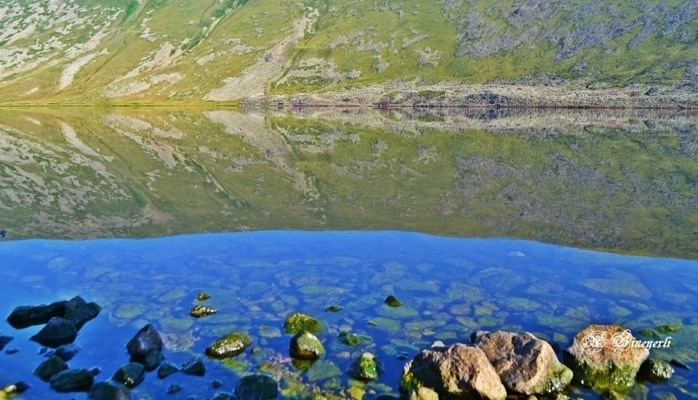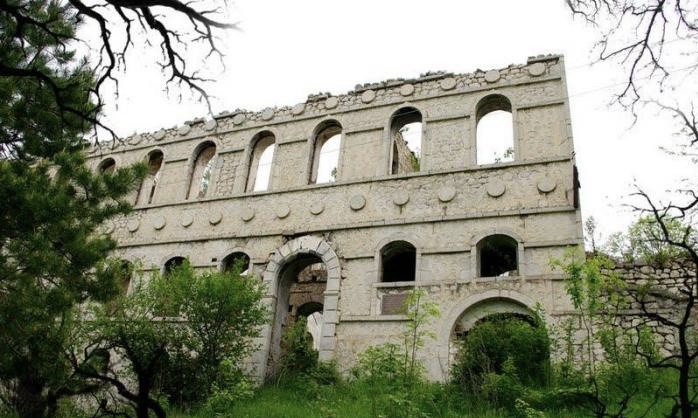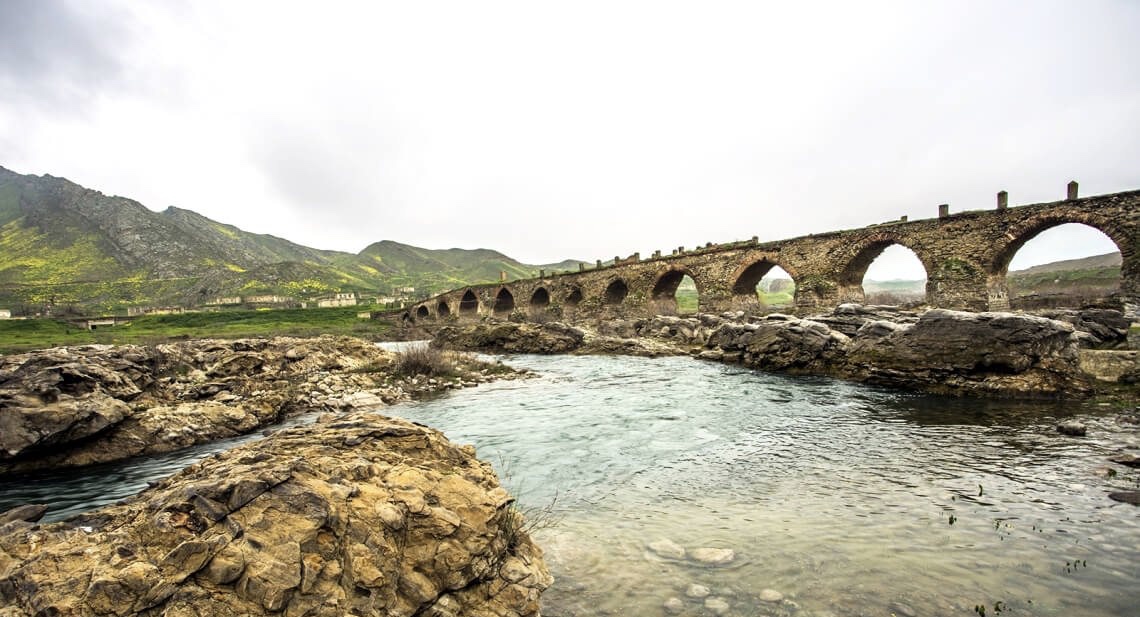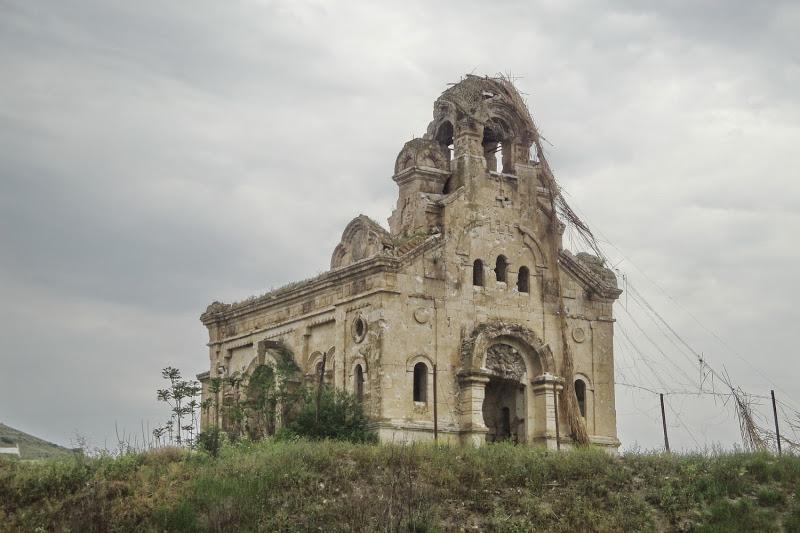






of







of







of





















As a district, Fuzuli was founded in 1827 and the initial name was Garabulag. On August 8, 1930, it was granted an administrative district status following the occupation of Azerbaijan by Soviet Russia and was called Karyagin. The town was renamed Fuzuli in 1959 on the occasion of the 400th birthday anniversary of the great Azerbaijani poet Muhammed Fuzuli. Even though as a district Fuzuli was founded in 1827, the findings in Azikh cave in the district prove that it was one of the ancient human settlements. In general, the district boasts caves that hold evidence of early humanoid habitation as far back as one million years ago. One could hardly imagine the number of ancient residential areas, graves, and mounds located in such a small territory. The most ancient metallic findings in the southern Caucasus were discovered in Fuzuli.
Fuzuli district covers the territory from the south-eastern slopes of Karabakh Mountain range to Araz River. The district borders Jabrayil in the south-west, Khojavend and Aghjabadi districts in the north, Beylagan in the east and south, Iran along the Araz River in the west. The Guruchay, Kondelenchay, Gozlucay, Chereken Rivers flowing through the district are the Araz Basin Rivers.
Its territory makes 1,039 square kilometers with 121,9 thousand population by 2013. There were two administrative central cities in the district; Fuzuli and Horadiz, 11 settlements (newly built “Gayidish” settlements № 1-11) and 82 villages. The villages are: Alkhanli, Arayatli, Babi, Mollameherremli, Ashaghi Seyidehmedli, Shukurbeyli, Araz Dilagharda, Shekerchik, Shikhli, Boyuk Behmenli, Juvarli, Chimen, Xelefshe, Dedeli, Ishigli, Garghabazar, Yukhari Yaghlivend, Yukhari Aybasanli, Yal Pirehmedli, Dilagharda, Dordler, Gobu Dilagharda, Dovletyarli, Gervend, Zerger, Yukhari Abdurrahmanli, Ashaghi Abdurrahmanli, Kurdler, Ahmedalilar, Gazakhlar, Mirzenaghili, Ahmedbeyli, Araz Zerger, Garabagh, Murtuzalilar, Gejegozlu, Uchunju Mahmudlu, Horadiz, Dordchinar, Hungutlu, Kerimbeyli, Ashaghi Yaghlivend, Yukhari Kurdmahmudlu, Ashaghi Kurdmahmudlu, Gajar, Divanalilar, Garakhanbeyli, Garamemmedli, Ikinji Mahmudlu, Merdinli, Garakollu, Gorazilli, Khatinbulag, Garadaghli, Sarajig, Yukhari Rafadinli, Yukhari Guzlek, Gochahmedli, Arish, Mollaveli, Sardarli, Uchbulag, Govshatli, Shikhimli, Ashaghi Veyselli, Yukhari Veyselli, Aghbashli, Yukhari Seyidahmadli, Birinji Mahmudlu, Mirzejamalli, Alesgerli, Huseynbeyli, Seyidmahmudlu, Pirehmedli, Ashaghi Guzlek, Ashaghi Refedinli, Mandili, Musabeyli, Bala Behmenli, Gorgan.
The basis of the economy of the district was agriculture. It is explained by the fact that in terms of productivity gray, brown, gray-brown land is suitable for agriculture. Before the occupation vine-growing, grain-growing, cattle-breeding, sheep-breeding, poultry farming, and silkworm breeding had widely developed in Fuzuli. There were 65 collective and state farms, 12 farmer farms, 11 grape processing plants, etc. in Fuzuli. 85 thousand hectares of land were agricultural lands. There were 50.9 thousand hectares of pastures. The water reservoir was constructed on the river Kondelenchay. Irrigation canals were built there and 24 thousand hectares of land were irrigated. Before the occupation farmers had kept 17.6 thousand cattle, 70 thousand sheep, and goats there. In addition to agriculture, construction trust, 6 transport departments, 13 industrial enterprises were functioning in Fuzuli.
90 libraries, 20 culture houses, 79 clubs, 20 cinemas, 2 museums, people’s and state drama theatres, recreation parks had been operating in the district before the occupation. There were 13 hospitals with 685 beds, 17 medical centers, 30 health stations, tuberculosis, skin, and venereal diseases dispensaries, colleges, 86 secondary schools, 2 technical-vocational schools, 65 kindergartens, stadiums, etc. in the district.
Also, potential strengths, men of mighty intellect, prominent scientists from Fuzuli have gained great fame in our country. Labor commitment, honest efforts had always been a way of life for people of the district. Shamama Hasanov who was twice awarded the title of Hero of Socialist Labor was from Fuzuli. More than 300 candidates of science (PhDs) and doctors were born in Fuzuli. At the same time, Fuzuli district recognized with Azykh Cave, Guruchay culture, history and architectural monuments which histories date back millennia.
Fuzuli district was occupied by the armed forces of Armenia on August 23, 1993. Owing to successful military operation held in the district in 1994, 13 settlements out of 82 were liberated from the occupation and today 65.962 residents from Fuzuli live in their homelands. 55.038 IDPs (internally displaced persons) have settled in Baku and the other 50 cities and districts of Azerbaijan. In the occupied territories the Armenians have not only carried out environmental terrorism but also savagely and barbarously destroyed the cemetery related to the XII century, Mirali tomb and Jalil tomb of the XVII century, the mosque, Imamzada mausoleum built-in 1684, old bridges. As a result of the Karabakh War more than 1,100 inhabitants of Fuzuli became martyrs, 1,550 people obtained disablement, 181 people are missing, 36.361 children suffered from the Armenian aggression, 155 out of them became orphan. 8 people from Fuzuli have been awarded the title of National Hero of Azerbaijan.
The great heaviness of the war fell on the shoulders of the country’s people of Gajar, Divanlilar, Yukhari Veyselli, Ashaghi Veyselli, Garadaghli, Uchbulag, Arish, Gochahmedli, Juvarli, Guzdak, Gorazilli, Jamilli, Dilagharda, Yaghlivend, Govshad, Khalafsha, Mollaveli villages.
On October 17, 2020, the Glorious Army of Azerbaijan liberated Fuzuli from the Armenian occupation.

Qaragol Interrepublics State Reserve was set up with the decision of the Council of Ministers dated November17, 1987. Garagol State …

The idea of establishing Aghdam Bread Museum, which is considered to be the second in the world after the Zurich …

The Khurshudbanu Natavan’s House is a historical and architectural monument of the 18th century located in the city of Shusha. …

Museum Mausoleum Complex of Molla Panah Vagif is located in Shusha, Azerbaijan. It was built in honor of Molla Panah …

The Bridge belongs to the Arran architecture school. The first written source that mentioned the 15-arched Khudafarin Bridge belongs to …

Garghabazar Caravanserai was built in 1681 at the hillside, in the center of Garghabazar village of Fuzuli district, 8 km …

Armenia’s vandalism in Nagorno-Karabakh and seven surrounding regions affected not only the historical, cultural, and religious heritage of Islam but …

Jabrayil History-Ethnography Museum has been operating since 1953. Archaeological and ethnographic materials belonging to the history of the region, textiles, …

Khudavang, or Dedeveng, Monastery Complex is located in the Vang village of Kalbajar District, on the left bank of Tartar …

“The 19th century Aghdam Juma Mosque is perhaps the only structure that has withstood the years of neglect since the …